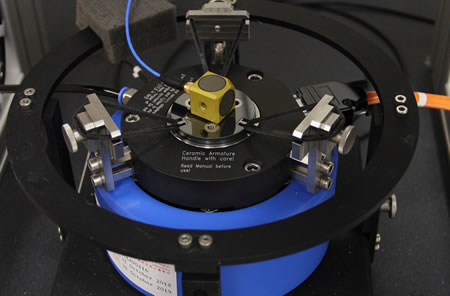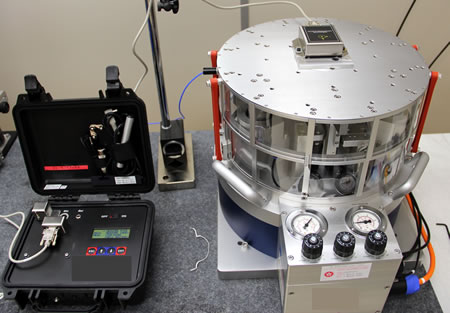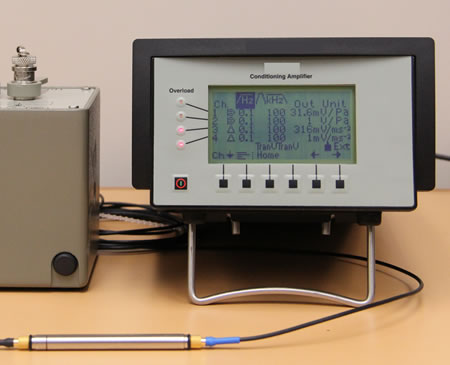Calibration Services
Acoustics, Ultrasound and Vibration: Vibration Meter, Accelerometer
Accelerometers for Vibration Measurements
 Accelerometers for Vibration Measurement
Accelerometers for Vibration Measurement
Accelerometers are usually piezoelectric transducers which utilize the piezoelectric effect to generate an electrical signal in response to the applied acceleration or mechanical stress. They are widely used today in engine testing, ballistics, machine health monitoring, transportation systems, shock and vibration isolation and structural analysis. The Vibration Laboratory of the SCL provides calibration services on accelerometers by means of the comparison method (Back-to-back Method) as stipulated in the International Standard ISO 16063-21:2003 or by interferometry, the primary method in accordance with ISO 16063-11:1999. The calibration covers the frequency range from 10 Hz to 10 kHz.
Vibration Meters
 Vibration Meter
Vibration Meter
Vibration meters normally consist of a single-axial or tri-axial type vibration transducer (accelerometer) and a display unit. They are usually hand-held devices for the assessment of vibration on machines and systems. They can also be used in civil engineering to measure the vibration of structures such as buildings, roads and bridges. The Vibration Laboratory of the SCL provides calibration services on vibration meters by using the comparison method. The calibration covers the frequency range from 10 Hz to 10 kHz.
Charge Amplifiers for Vibration Measurements
 Charge Amplifiers for Vibration Measurement
Charge Amplifiers for Vibration Measurement
A charge amplifier consists of a charge converter connected to one channel of a conditioning amplifier. The chain converts the output charge generated from a piezoelectric accelerometer to AC output voltage. The Vibration Laboratory of the SCL provides calibration services on charge amplifiers covering the measurement of their gain at the frequency range from 50 Hz to 10 kHz.